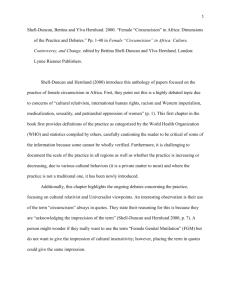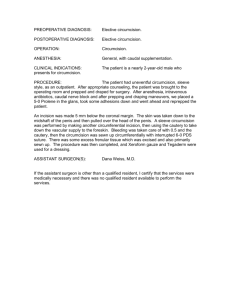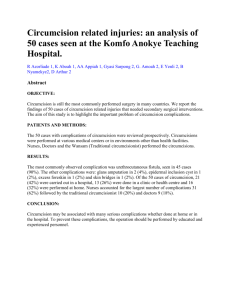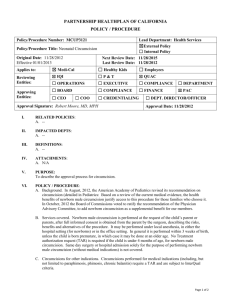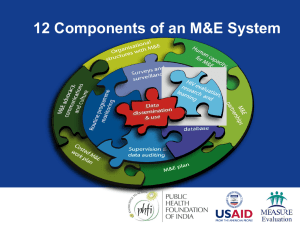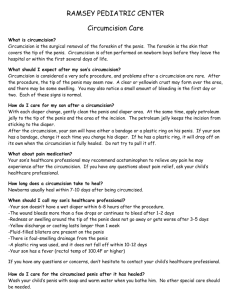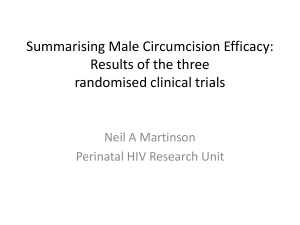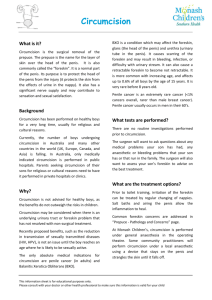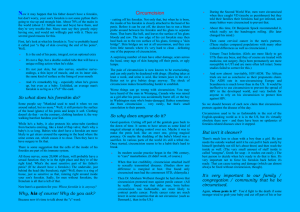Ndura, Milka K.
advertisement
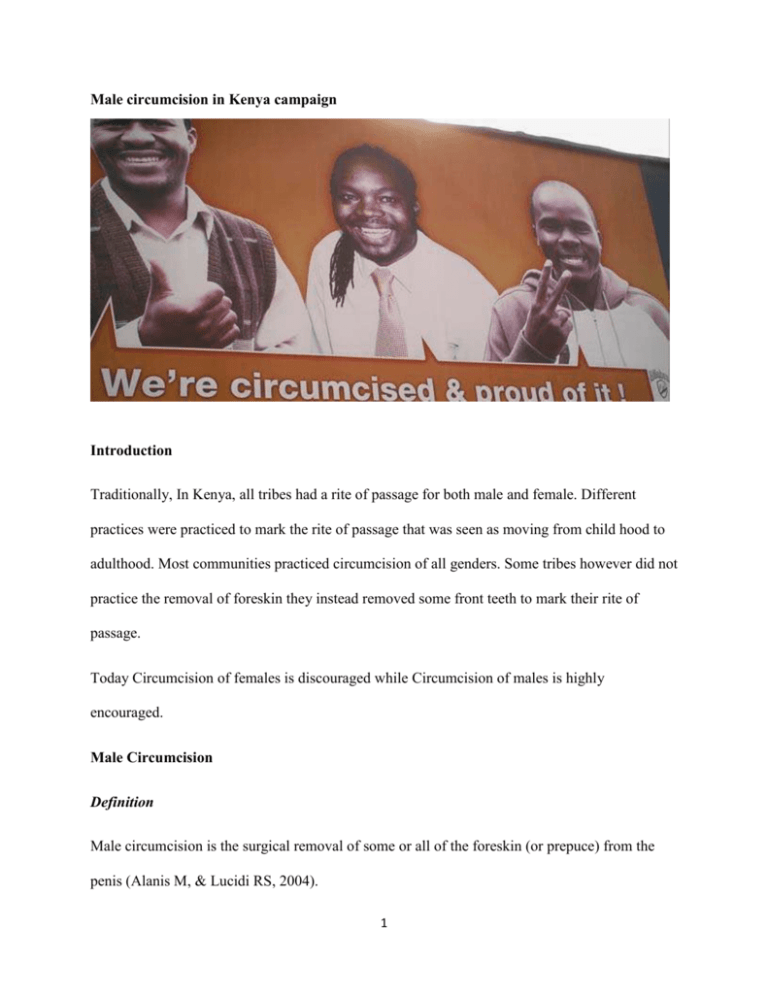
Male circumcision in Kenya campaign Introduction Traditionally, In Kenya, all tribes had a rite of passage for both male and female. Different practices were practiced to mark the rite of passage that was seen as moving from child hood to adulthood. Most communities practiced circumcision of all genders. Some tribes however did not practice the removal of foreskin they instead removed some front teeth to mark their rite of passage. Today Circumcision of females is discouraged while Circumcision of males is highly encouraged. Male Circumcision Definition Male circumcision is the surgical removal of some or all of the foreskin (or prepuce) from the penis (Alanis M, & Lucidi RS, 2004). 1 Research has shown that Circumcision of male reduces infection of HIV virus (Bailey et al, 2007, Gray et, al, 2007, Reynolds, 2004) and this has led to campaigns from the nongovernmental organizations and the government encouraging the men that did were not circumcised to participate in the exercise. Mobile outreach clinics have been put in place to reach out to men especially in Nyanza province of Kenya. Linkage between Male Circumcision and Spread of HIV Some laboratory studies have shown that specific cells in the foreskin may be potential targets for HIV infection. The foreskin is susceptible to tears during intercourse and this tear provide an entry for pathogens like bacteria and HIV and also the skin under the foreskin becomes less sensitive and is less likely to bleed reducing risk of infection following circumcision. Specific bacteria taxonomically defined as anaerobic dominated the microbiota of the penile coronal sulcus before circumcision. However, after circumcision, these bacteria decreased dramatically. Thus, the reduction in the putative anaerobic bacteria after circumcision may play a role in protection from HIV and other sexually transmitted diseases (The Translational Genomics Research Institute, 2010). However this should not mean that men should have unprotected sex, or consider themselves “protected”, getting circumcised would enable heterosexual men lower their risk of getting infections (The Translational Genomics Research Institute, 2010). 2 References Alanis MC, Lucidi RS. (2004 May).Neonatal circumcision: a review of the world's oldest and most controversial operation. Obstet Gynecol Surv.;59(5):379-95. Bailey, R. C., Moses, S., Parker, C. B., Agot, K., Maclean, I., Krieger, J. N., ... & NdinyaAchola, J. O. (2007). Male circumcision for HIV prevention in young men in Kisumu, Kenya: a randomised controlled trial. The Lancet, 369(9562), 643-656. Gray, R. H., Kigozi, G., Serwadda, D., Makumbi, F., Watya, S., Nalugoda, F., ... & Wawer, M. J. (2007). Male circumcision for HIV prevention in men in Rakai, Uganda: a randomised trial. The Lancet, 369(9562), 657-666. The Translational Genomics Research Institute (2010, January 6). Why circumcised men are less likely to become infected with HIV: Changes in bacteria within penis microbiome. ScienceDaily. Retrieved November 6, 2013, from http://www.sciencedaily.com/releases/2010/01/100106003617.htm/ Reynolds, S. J., Shepherd, M. E., Risbud, A. R., Gangakhedkar, R. R., Brookmeyer, R. S., Divekar, A. D. & Bollinger, R. C. (2004). Male circumcision and risk of HIV-1 and other sexually transmitted infections in India. The Lancet, 363(9414), 1039-1040. 3
